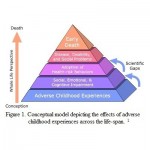Finding Resiliency in Vulnerability: Shifting Perspectives on Genes and Environment
Clients frequently ask me if their mental and emotional struggles are a result of their genes or their environment. My answer is always the same – “yes”. Of course, my simplistic response refers to the interaction between genes and environment that characterizes nearly all mental health conditions, but it clearly belies the centuries of debate on this fundamental and contentious topic. In recent decades, the Cartesian dualism that has traditionally dominated the nature-nurture debate has given way to scientific theories that describe complex, bi-directional relations between genes and environment. These theories of human development have also furthered our understanding of “neural plasticity” – the exciting notion that our brains are more malleable and open to change than we once thought.
First, a brief historical regression may be helpful. In the early part of the twentieth century, psychoanalysis was the dominant perspective in psychology and its guardians were particularly keen on environmental influences. In fact, parents of the baby-boomer generation were likely told that schizophrenia was entirely caused by cold, unresponsive mothering (i.e., so-called “schizophrenigenic mothers”). Behaviorism, which rose to prominence in the early-to-middle part of the century, saw human development as a process of learning based on stimulus-response interactions between an organism and its environment. By the nineteen-sixties, the “cognitive-revolution”, with its emphasis on internal mental states and the promise of neuroscience advances, largely eclipsed these theories, but still had relatively little to say about the role of genetics.
In the second half of the twentieth century, geneticists began conducting large twin and adoption studies and found that a number of psychiatric conditions showed evidence of genetic heritability. For example, studies showed that schizophrenia occurs in 1% of the general population, but this increases to 6% if a parent is affected and 48% if an identical twin is affected. Findings such as these clearly showed that genetics play a role in many forms of mental illness. However, by the end of the twentieth century, the pendulum had swung too far in the direction of genetic influence, with some researchers claiming that single genes could be wholly responsible for complex phenomena like depression, violence and even suicide (e.g., one research group claimed to have found “the suicide gene”). Read more





